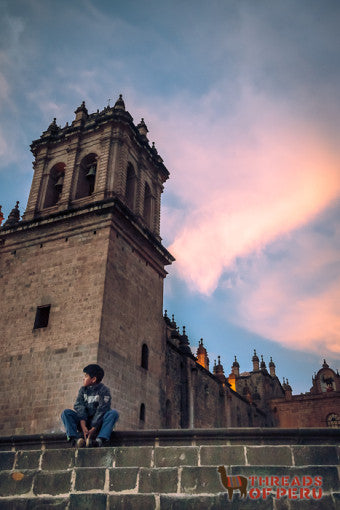Down here in the Southern Hemisphere the days are getting shorter and the nights longer. That means, by the time most Peruvians are getting off of work, the sun has already retreated to sunny summer shores in the north. But an early nightfall doesn’t mean Cusco is a sleepy city, as the distant thumping of discothèques and street-food vendors setting up shop will attest.
In the city’s colonial center, floodlights provide a new perspective on the massive churches and Incan walls. As the night goes on, traffic dwindles, leaving room for locals and tourists to stroll the cobbles. Life at night is no less vibrant — just slower paced.

On pedestrian streets like Calle Mantas, families walk hand-in-hand while businessmen hurry home. Light pours onto the street from small cafes and visitors from around the world lounge on second-story balconies watching the sun disappear.

In the Plaza de Armas, the sellers of paintings and jewelry pack up their goods. The hustling-bustling square gets quieter, and people take time to sit on the steps of the Cathedral; still warm from the afternoon sun.

As the last rays of natural light fade, the plaza is illuminated with electric ones. Colored lights trained on the statue of the Incan king Pachacuteq cycle through a rainbow of hues. And, as the sky makes its way from dark-blue to black, the first stars begin to burn low on the horizon

